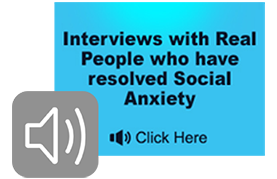- Selective mutism is a social anxiety disorder characterized by not speaking to specific people or in specific venues. It is a specific variation of obsessive compulsive disorder. “Obsessive” refers to the conscious and non-conscious worrying. “Compulsive” refers to the verbal shutdown. The problem varies in degrees of severity. In addition to children many adolescents and adults are affected.
- The condition is relatively easy to diagnose. If you know that the individual can speak normally but refuses to do so in specific situations, selective mutism is present. To rule out other disorders, however, it is important to assess if “processing” challenges are present.
- Selective mutism is not a speech disorder. Speech therapy and traditional individual therapy for the child are in fact typically non-productive.
- Selective mutism can be considered an “compulsion” to the avoidance of speaking, or a phobia of speaking.
- Selective mutism in childhood is an example of social phobia as anxiety has resulted in verbal avoidance in performance scenarios.
- If not addressed and corrected, Selective mutism can cause avoidant and dependent personality disorders. Anxiety worsens with time as it integrates insidiously into the personality.
- Productive treatment is primarily based on a multi-dimensional methodology founded on “empowering” parenting. In most cases, for school interventions to be successful, re-parenting strategies must be in effect at home and working. If not, there is much potential for “fragmentation” of care-giving which worsens the problem.
- The biggest mistake made regarding selective mutism in children is the belief that “the child will grow out of the problem”.
- The second biggest mistake is the incorrect use of medication, which typically worsens the problem.
- There are very few therapists anywhere in the world who have demonstrated clinical productivity and expertise for treating this condition.
The Ten Key Points To Know About Selective Mutism
About Jonathan Berent, L.C.S.W., A.C.S.W.
 Jonathan Berent, L.C.S.W., A.C.S.W., is a psychotherapist who has been practicing since 1978. He has created the Berent Treatment Method for Social Anxiety, which is the result of his clinical work with thousands of individuals of all ages with social anxiety since 1978. He is the author of Work Makes Me Nervous: Overcome Anxiety and Build the Confidence to Succeed, Beyond Shyness: How to Conquer Social Anxieties, and Social Anxiety: The Untold Story, which is an accredited course for mental health professionals in using the Berent Method to treat social anxiety... Read More
Jonathan Berent, L.C.S.W., A.C.S.W., is a psychotherapist who has been practicing since 1978. He has created the Berent Treatment Method for Social Anxiety, which is the result of his clinical work with thousands of individuals of all ages with social anxiety since 1978. He is the author of Work Makes Me Nervous: Overcome Anxiety and Build the Confidence to Succeed, Beyond Shyness: How to Conquer Social Anxieties, and Social Anxiety: The Untold Story, which is an accredited course for mental health professionals in using the Berent Method to treat social anxiety... Read More


